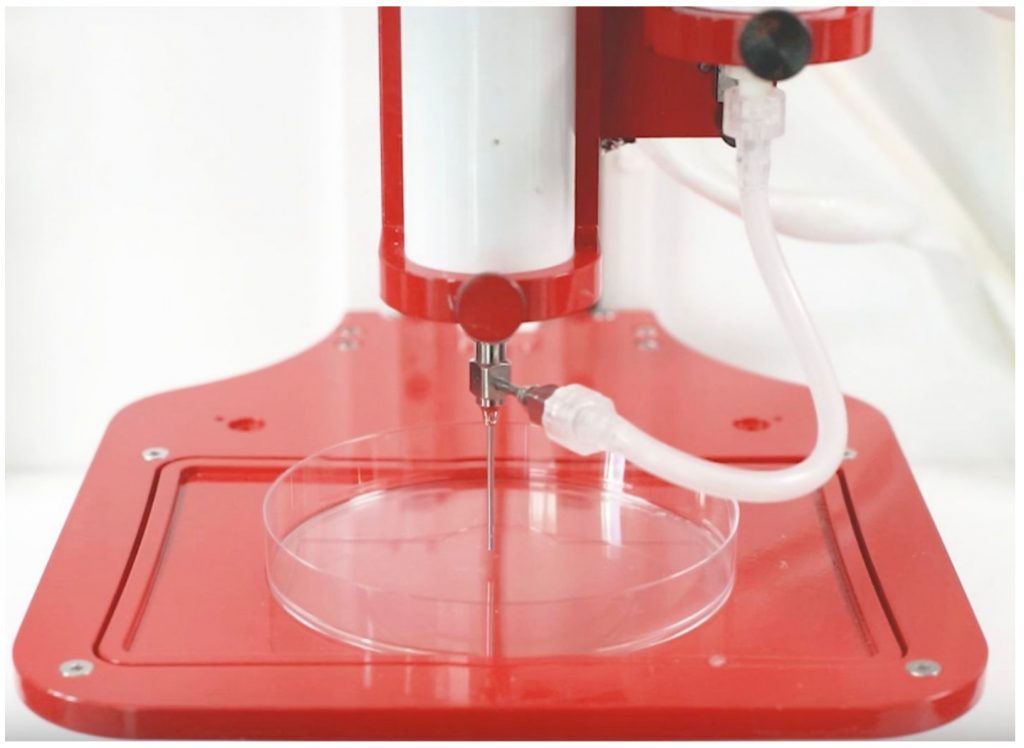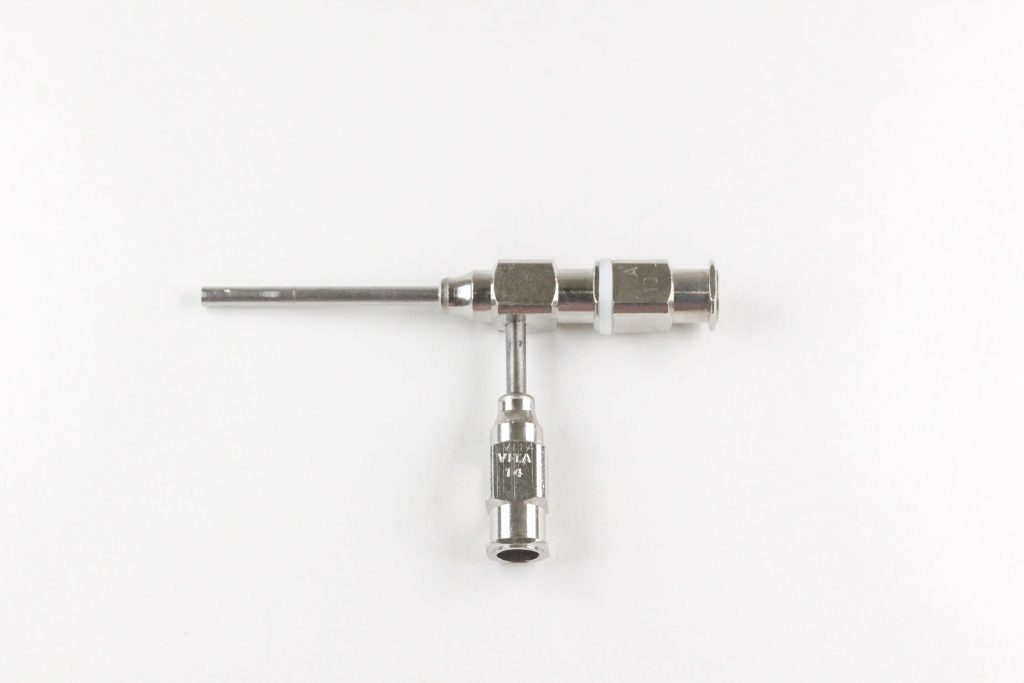
Bioprinter company Allevi was launched in 2014. The firm now has a family of bioprinters ranging from the simple Allevi one to the 6 temperature controlled print head Allevi 6. This printer also has photocuring on board, a reported sub-micron precision and auto calibration. Allevi also sells bioinks but lets you put any material in the printer that you wish. The company has materials such as gelatin methacrylate, alginate, PEGDA, collagen, pluronics and silk available. What we didn’t sufficiently appreciate is that the firm also has what it calls ink kits. These are kits such as a FRESH kit which will let you begin with the FRESH hydrogel printing method and also a conductive tissue kit so you can explore this. By offering these types of kits the Allevi team is adding value to their installed base and extending their use of the printer.
This kind of a play was almost completely absent in the desktop 3D printing space and a lot of firms let a lot of money on the table there. In desktop FDM people left spare parts and aftermarket upgrades to companies such as E3D online which have made a pretty penny (and lots of ugly ones too) from upgrading the nozzle and other components. By offering kits directly Allevi is binding customers to them, getting more revenue and building a stronger relationship with them. Furthermore, they’re also inhibiting other people from entering their market via the aftermarket or losing money to teams of researchers hacking their own nozzles and things.

Allevi’s newest kit is a coaxial extrusion kit.
The company explained the need for coaxial extrusion through citing papers that used coaxial:
“Co-axial nozzles date back quite some time ago in tissue engineering. Scientists, such as Dr. Ibrahim Ozbolat, recognized their potential to create perfusable microchannels within hydrogels. Then others such as Dr. Ali Khademhosseini and Dr. Yu Shrike Zhang began to use co-axial nozzles to cast endothelial microchannels. Dr. Jason Burdick even used similar channels to sprout angiogenesis. Now others have realized its potential to print tissue strands as Dr. Swieszkowski and Dr. Barbetta highlight. This ability has driven the co-axial nozzle’s use in all sorts of tissue types from cartilage, skeletal muscle, liver, hearts, and even tumors.”
When we reached out to them co-founder and CEO Ricky Solorzano explained to us that,
“This is important because one of the biggest challenges in bioprinting is being able to get soft materials that cells like into meaningful patterns. One of our jobs at Allevi is to empower scientist with all these different avenues. Co-axial nozzles in the past few years has become quite a popular avenue for being able to achieve this.
At first they were used to create microchannels for vascularization, which is a top priority for tissue engineering. With the ability to do the reverse of this, instead printing micochannels one can print, hydrogel fibers. This hydrogel fiber printing has allowed scientist to print all types of tissues, cartilage, heart, muscle, liver, and even tumors.”
We think that expanding your market and expanding the functionality of your systems in such a way is a very astute move indeed. By focusing on researchers needs in achieving vascularization Allevi is helping them surmount the main barrier currently holding back bioprinting. We’d welcome more aftermarket vendors for desktop 3D printers that would improve, upgrade and bring new functionalities to the million 3D printers out there.
Subscribe to Our Email Newsletter
Stay up-to-date on all the latest news from the 3D printing industry and receive information and offers from third party vendors.
You May Also Like
NSF Awards Kentucky $1M for Advanced Manufacturing
The National Science Foundation has awarded a $1 million grant to the University of Louisville for the Advancing Manufacturing and Building Construction Technologies (NSF AMT) project. This initiative is part...
3D Printing News Briefs, May 11, 2024: 3D Printed Stent, Tower, Sculptures, & More
We’re starting off with medical research in today’s 3D Printing News Briefs, as researchers in Korea used CT images and 3D printing to fabricate an educational simulator for a mastoidectomy....
3D Printing Unpeeled: Wind Turbines, Probiotics and Lenses
TPI Composites, ORNL and Ingersoll Rand are working to make wind turbine tooling segments that can be 18.3 meters long. These elements also include resistive wires that help keep the...
Tethon 3D Releases Cost-effective Bioprinter
Tethon 3D, known for its ceramic-loaded DLP materials, custom resins, and DLP 3D printers, has recently released a bioprinter. Vat polymerization printers like DLP systems have been widely used by...
































